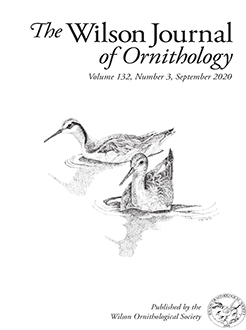The green plumage of parrots confers a degree of camouflage amidst the canopy foliage the birds frequent. In parrots, green feather colors result from the juxtaposition of endogenously produced yellow pigments, termed psittacofulvins, and spongy structures in the feather barbs that produce a blue color. In rare individuals, the yellow pigments are missing, resulting in a blue phenotype, a variant plumage coloration. The Mexican Parrotlet (Forpus cyanopygius) is endemic to Mexico and the male sports a largely green body with turquoise-blue color on the underwing coverts, lower back, and rump. While inventorying the avifauna of the tropical dry forest at Sierra de Quila, Jalisco, in west-central Mexico, we captured a blue individual with no hint of green. Typically, in parrots, a blue phenotype results from a recessive mutation that prevents the production of yellow pigments thus revealing the underlying blue structural color. As far as we know, this is the first documented record of a blue (or cyanistic) Mexican Parrotlet. Declining numbers of parrotlets in Mexico could potentially increase the probability of birds becoming homozygous for the recessive mutation.
How to translate text using browser tools
28 April 2021
Encounter of a cyanistic Mexican Parrotlet (Forpus cyanopygius) in west-central Mexico
Verónica Carolina Rosas-Espinoza,
Luz Patricia Castro-Félix,
Jocelyn Hudon,
Cristian Alejandro De La Torre Gutiérrez,
Aarón Cortez Ríos,
Ana Luisa Santiago-Pérez
ACCESS THE FULL ARTICLE
blue phenotype
Psittaciformes
psittacofulvin
structural color
tropical dry forest





